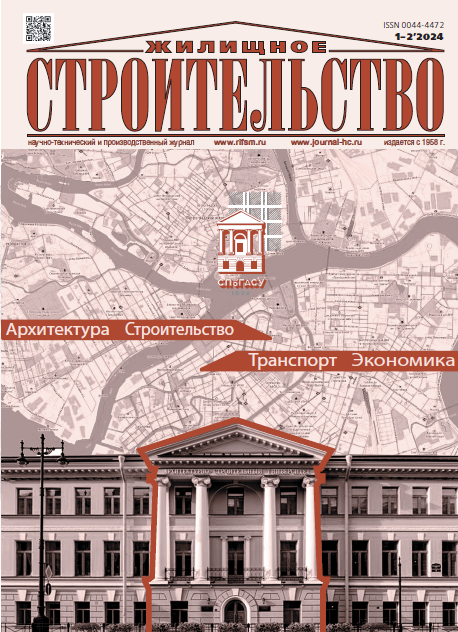The Influence of the Quality of Coarse Aggregate on the Uniformity of the Properties of Concrete Mixture and Concrete
- Authors: Kovaleva A.Y.1, Aubakirova I.U.1
-
Affiliations:
- Saint-Petersburg Petersburg State University of Architecture and Civil Engineering
- Issue: No 1-2 (2024)
- Pages: 109-113
- Section: Articles
- URL: https://innoscience.ru/0044-4472/article/view/635848
- DOI: https://doi.org/10.31659/0044-4472-2024-1-2-109-113
- ID: 635848
Cite item
Abstract
Industrial studies of the quality indicators of concrete mixtures (workability, water separation, mortar separation) and concretes (strength, uniformity of concrete in strength) have been carried out, depending on the characteristics of the filler used. The influence of fractionated and non-fractionated coarse aggregate on the properties of concrete mixtures and concretes was analyzed. It was confirmed that the use of fractionated coarse aggregate improves the quality indicators of concrete mixtures and concretes.
Full Text
About the authors
A. Yu. Kovaleva
Saint-Petersburg Petersburg State University of Architecture and Civil Engineering
Author for correspondence.
Email: kovalevaau@mail.ru
Candidate of Sciences (Engineering)
Russian Federation, 4, 2nd Krasnoarmeyskaya Street, Saint Petersburg 190005I. U. Aubakirova
Saint-Petersburg Petersburg State University of Architecture and Civil Engineering
Email: centeririna@yndex.ru
Candidate of Sciences (Engineering)
Russian Federation, 4, 2nd Krasnoarmeyskaya Street, Saint Petersburg 190005References
- Kharitonov A. Structural approach for numerical internal strain modelling of conglomerate structures. Architecture and Engineering. 2017. Vol. 2. No. 2, рp. 3–7. DOI: https://doi.org/10.23968/2500-0055-2017-2-2-3-7
- Inozemtsev S.S., Susanina T.V., Stibunov D.V., Keita M.L.F. Trends in the development of scientific directions in the field of road construction materials in Russia (review). Stroitel’nye Materialy [Construction Materials]. 2023. No. 12, pp. 4–19. (In Russian). DOI: https://doi.org/10.31659/0585-430X-2023-820-12-4-19
- Khrenov G.M., Morozov V.I., Zhavoronkov M.I., Petrova T.M. The role of the filler in the formation of plastic properties of concrete mixtures. Vestnik grazhdanskikh inzhenerov. 2021. No. 5 (88), pp. 119–125. (In Russian). DOI: https://doi.org/10.23968/1999-5571-2021-18-5-119-125
- Belov V.V., Smirnov M.A. Formation of the optimal macrostructure of the building mix. Stroitel’nye Materialy [Construction Materials]. 2009. No. 9, pp. 88–90.
- Lopukhov V.Yu., Belentsov Yu.A., Zolotov V.M. A structural approach to the use of concretes with a low cement content. Vestnik of the BSTU named after V.G. Shukhova. 2014. No. 6, pp. 96–99. (In Russian)
- Makeev A.I., Chernyshov E.M. Experimental studies of the regularity of the influence of the dimensional and geometric parameters of crushed stone on the potential of concrete resistance to destruction. Stroitel’stvo i rekonstruktsiya. 2018. No. 2 (76). 2018, pp. 122–134. (In Russian).
- Kharo O.E., Levkova N.S., Butkevich G.R. The nomenclature of non-metallic building materials and the prospects for its expansion. Stroitel’nye Materialy [Construction Materials]. 2005. No. 12, pp. 81–84. (In Russian)
- Lyapidevskaya O.B., Kamskov V.P. Osnovy stroitel’nykh norm (rossiiskikh i zarubezhnykh [Fundamentals of building codes (Russian and foreign)]. Moscow: MSUCE, 2017. 54 p. (In Russian).
- Travush V.I., Karpenko N.I., Erofeev V.T., Erofe- eva I.V., Tarakanov O.V., Kondrashchenko V.I., Kesariyskiy A.G. The study of crack resistance of concretes of a new generation. Stroitel’nye Materialy [Construction Materials]. 2019. No. 10, pp. 3–11. (In Russian). DOI: https://doi.org/10.31659/0585-430X-2019-775-10-3-11










